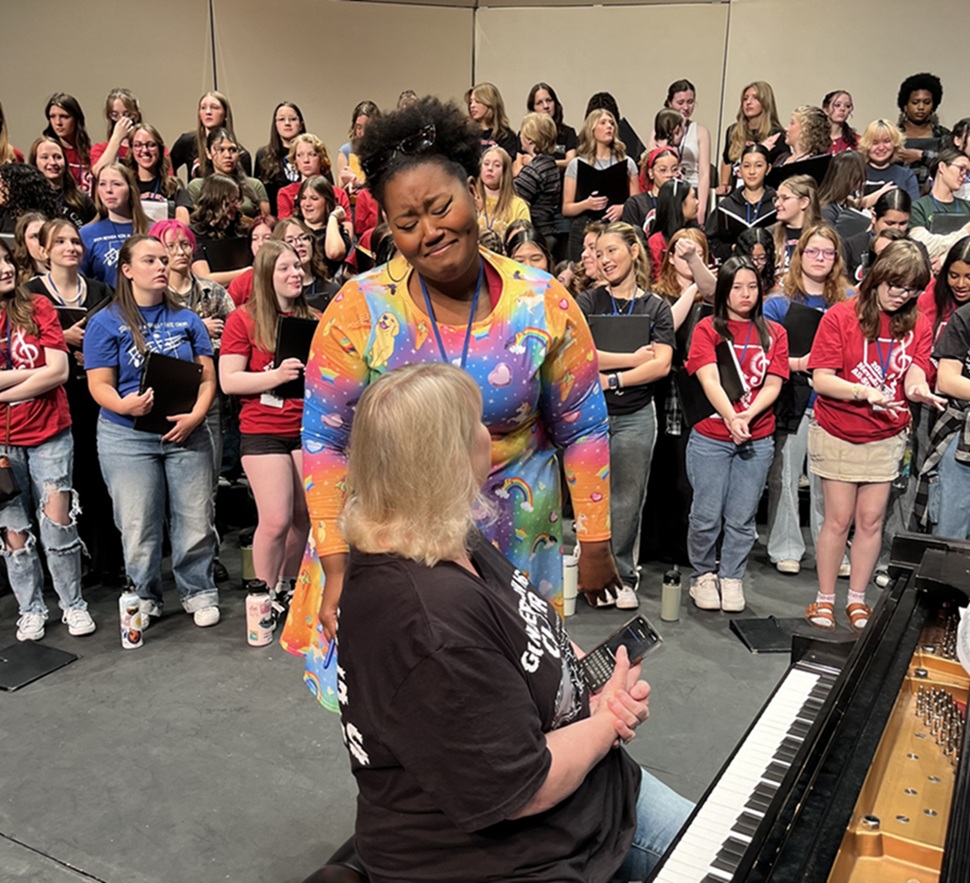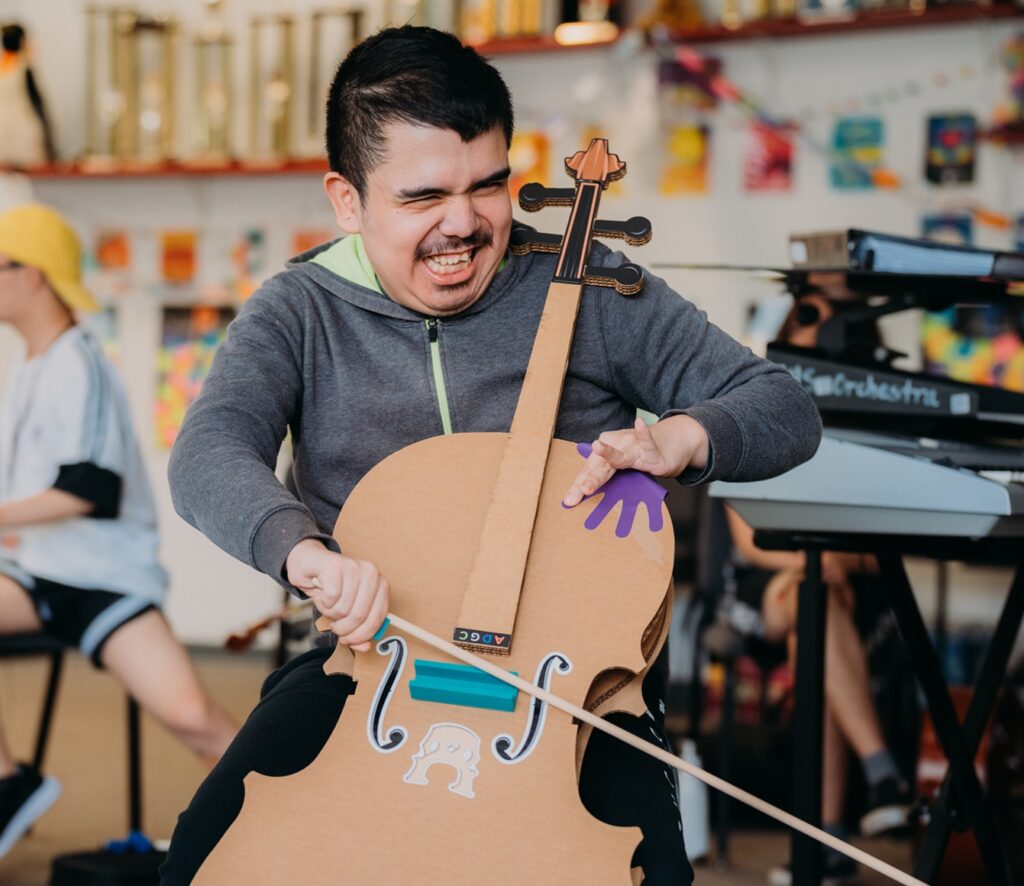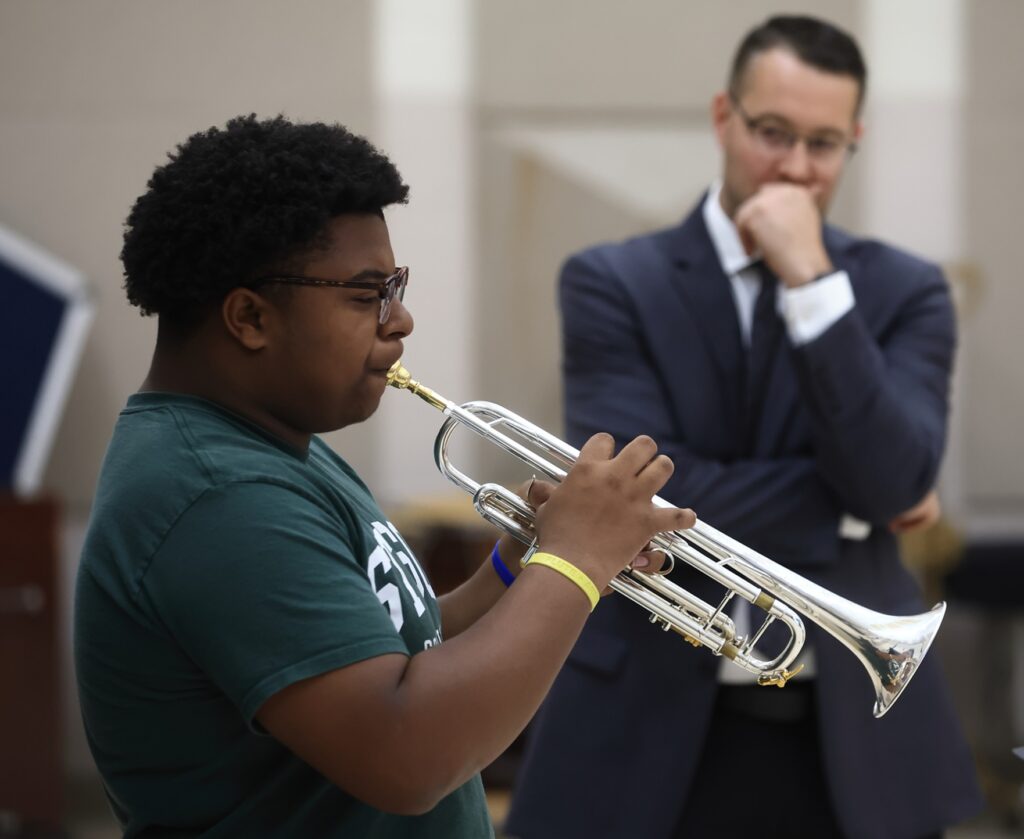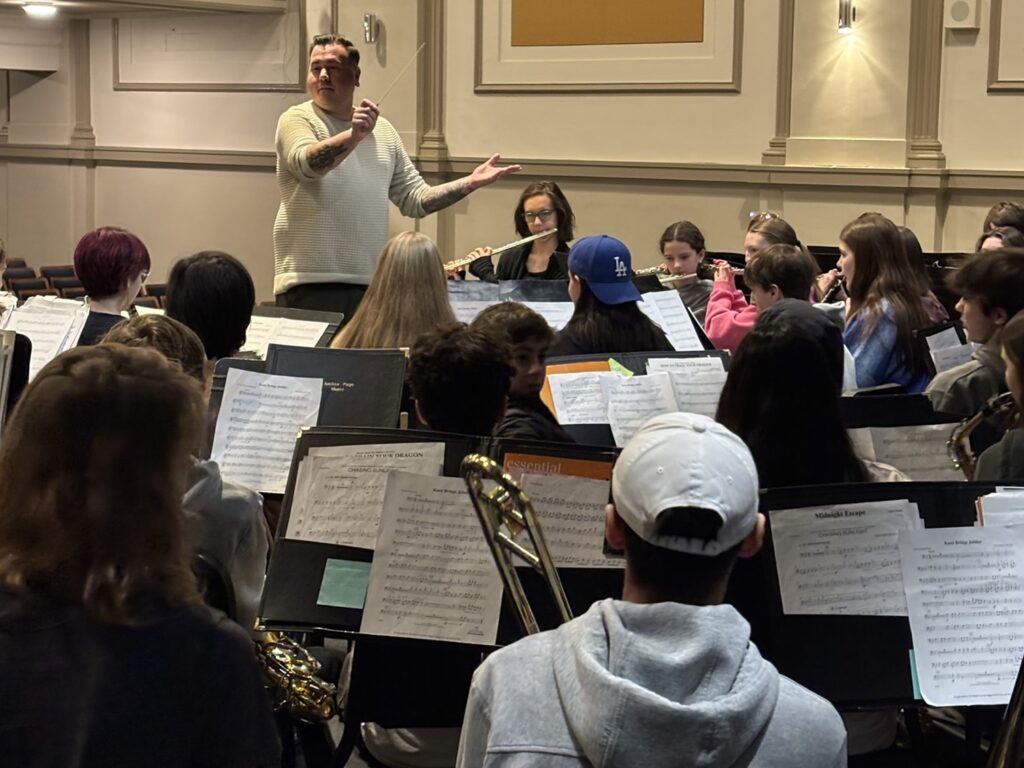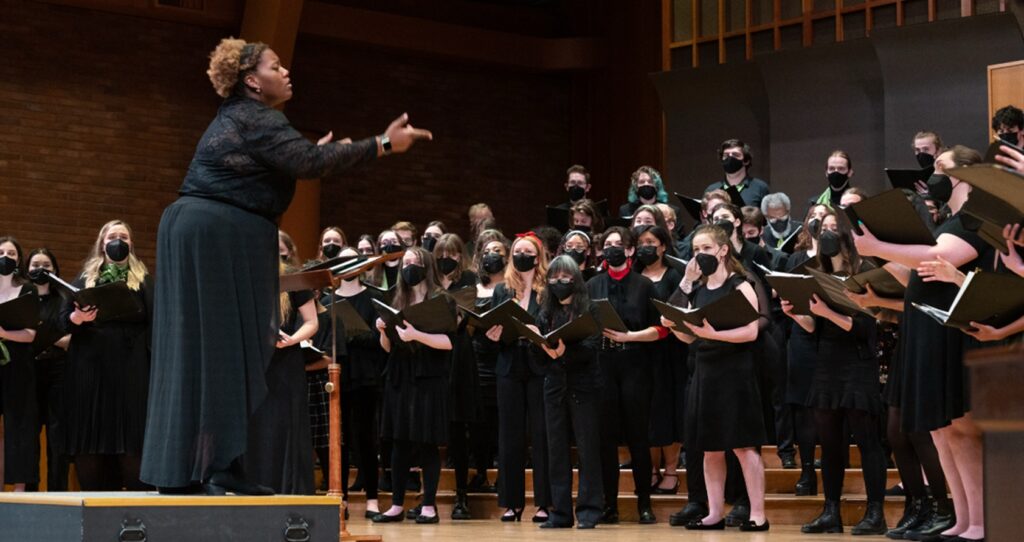Tagged Under:
Guitar as a Solo and Ensemble Instrument
Three keys to teaching ensemble guitar in a classroom setting to students at different skill levels.
About 60,000 years ago, what is widely accepted as the first instrument was created when someone carved some holes into an animal bone. During a time when the only instruments that existed were the human voice and primitive percussion, this early flute may have been made to mimic the melodic capabilities of the voice. In that respect, the first melodic instrument ever created was at its core a solo instrument.
Between then and the present day, we have seen the development of countless instruments, almost all of which began as solo instruments. The violin existed before the orchestra, the trumpet existed before the wind ensemble, and the guitar, for almost its entire lifespan, has served primarily as a solo or lead instrument.
The guitar is widely known as a screaming solo instrument in rock bands, or as a singular accompaniment instrument to folk singers across cultures. Only secondarily does it function as an ensemble instrument.
So, in the context of modern music education, how do you teach an instrument that so often performs alone or in a chamber ensemble, while also respecting the fact that your job is to prepare your students in a large ensemble for a concert?
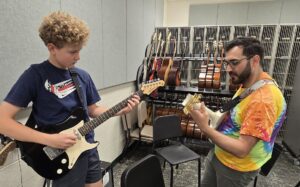
Two Types of Guitar Programs
Since I began teaching, I’ve primarily seen two types of guitar programs. The first is a program that looks a lot like a musical study hall. When you walk into the class, most students are looking at TABs on their phones to learn songs that they’ve recently heard on TikTok or the latest popular show on Netflix. In a vacuum, there is absolutely nothing wrong with students taking ownership of their learning by playing songs they’ve chosen for themselves or having self-directed time to learn at their own pace. However, the obvious shortcoming in this model is that students are not mastering any music literacy or ensemble skills, which are necessary to become well-balanced, resourceful musicians.
The second type of program functions almost like a typical band or orchestra program — for the first few months, all students learn the basics as an ensemble using a method book, and they play in unison most of the time, with the rare exception of a duet here and there. As students progress, the ensemble pieces should increase in difficulty. You can do this by adding more notes, more complex rhythms and more voices, but they will remain largely indistinguishable from a typical wind or string piece. While this model focuses more on literacy and ensemble playing, it ignores the reality of what skills are necessary to be a successful guitarist.
As guitar educators, our job is to prepare students to perform in a large ensemble context while simultaneously giving them the opportunity to practice the skills necessary to be a gigging guitarist. Below are my top-of-mind concepts when planning lessons and programming concerts.
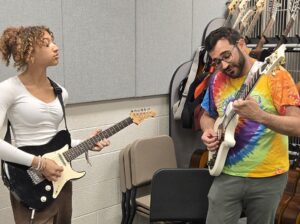
Opportunities for Solos and Improvisation
The most important thing to give young musicians, especially guitarists, is the opportunity to create and perform solos. Nothing demonstrates mastery of an instrument more than improvisation, so start by finding as many songs as you can that have a very simple melody and a two- or three-chord progression that can be soloed over, using only one scale. Teach the entire class the chords and the scale necessary for soloing and have them jam, making sure as many students as possible get a solo.
There are countless songs that will work, including:
Use these songs to teach improvisation and let students have fun jamming. You can also write simple arrangements to present these songs in concert. These songs are a staple in my repertoire, and I make sure that in every concert, there is at least one song that allows one of my students to snag a solo.
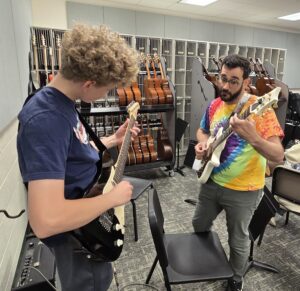
Perform Songs with Recognizable Riffs and Fit them into Ensemble Songs
Another important milestone in any young guitarist’s journey is learning the riffs of iconic songs they’ve always loved. The riffs in “Enter Sandman,” “Stairway to Heaven” and “Crazy Train” are far too complex to reasonably play with any large acoustic guitar ensemble that doesn’t perform at a professional level. However, songs like “Come as You Are,” “Day Tripper” and “Pretty Woman” have simple chord progressions and melodies, as well as challenging but accessible riffs that your strongest guitar players can perform in concert.
Make sure to teach everyone the riff and let “the cream rise to the top.” After that, simply write out the melody in standard notation, teach it to your students (simplify it to account for weird syncopations or teach by rote), and have most of them play it, while the other students play a standard lead sheet to the song.
The above two concepts can be (and probably should be) considered simultaneously. Songs like “Sunshine of Your Love,” “Smoke on the Water” and “Iron Man” have recognizable riffs, simple chord progressions and melodies, and large improv sections that students can jam over.
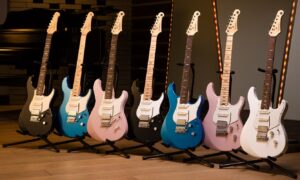
Guitar is for Everyone
This one might seem obvious, but I think a lot of teachers forget. Guitar is a unique instrument in that people of all skill levels can play together, so you, as the teacher, must learn to scaffold. For example, when I arrange songs, almost every single one has multiple chord charts.
The first chord chart is called “foundational.” It contains simplified chords (no dominant 7ths or b5s here) that can be played with three strings, so E minor is just the open G, B and E strings. From there, students graduate to root position basslines, which turn into root position power chords, then standard open chords, and then barre chords and triads, just like it was played in the recording.
Some students get past the foundational level sooner than others, but it’s essential for every student to feel like they can participate and contribute to the group. If you are just handing your students music and saying, “This is what we’re playing, so learn it,” you’re contributing to an environment where students will feel like they can’t participate in music-making unless they have a baseline level of knowledge that they may never have had the opportunity to obtain.
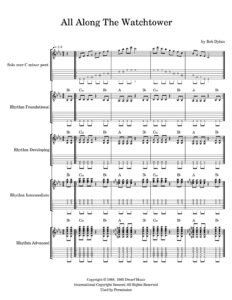
One to Try for Yourself
Here is an arrangement for “All Along the Watchtower” (click here to download the PDF) that you can use in your classroom that checks all the boxes above. Notice how the chord progression is simple, yet I scaffolded it to varying degrees of difficulty. To improvise only requires one scale, so students can be creative without a large barrier to entry.
Feel free to use this in your classroom (make as many copies as you’d like) as a teaching tool or even present it in a concert. If you’re looking for more arrangements to fit into your classroom repertoire, check out my website or email me.










